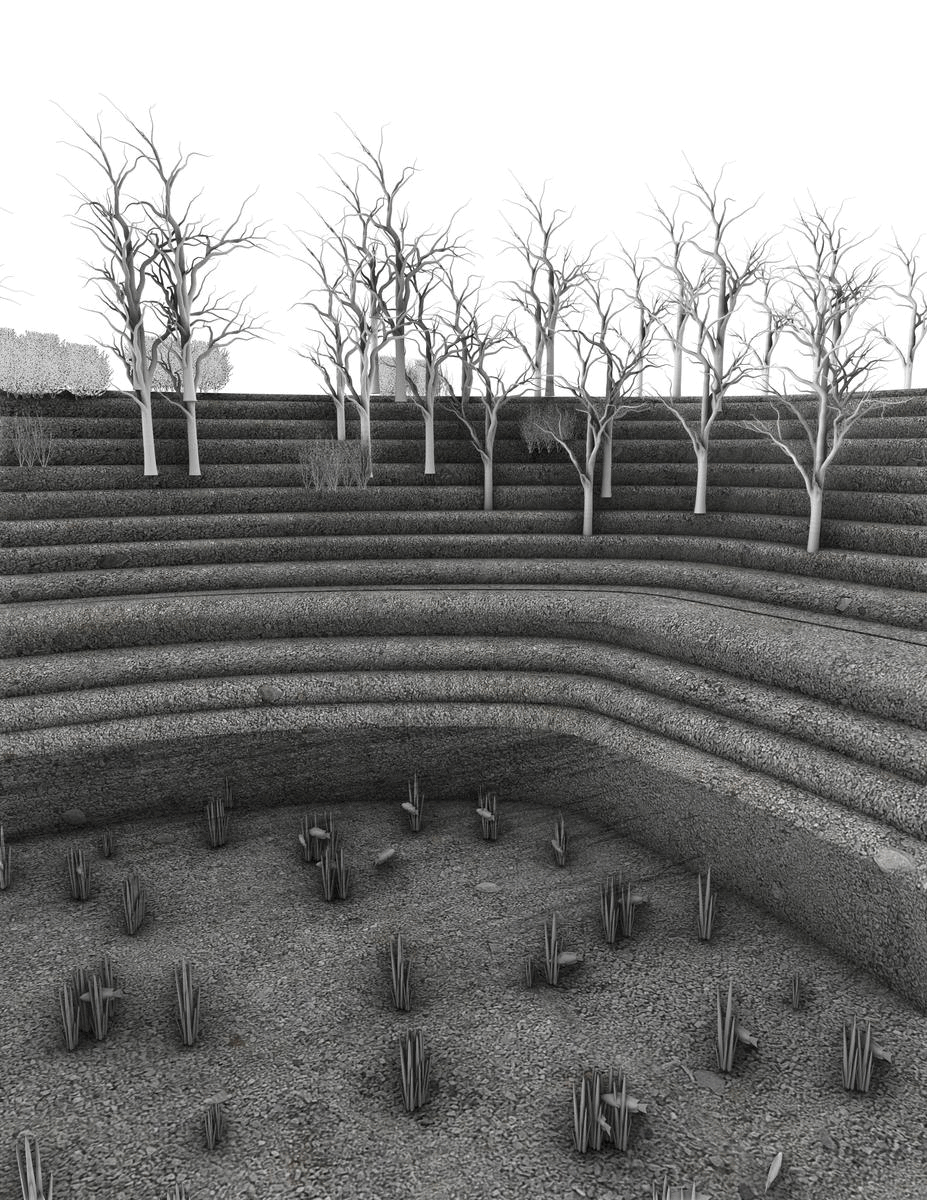
A species of waterfowl mostly active at night.
The climate crisis has changed the habitat of the night herons around Taninim Stream. As a result of the fires and changes to the local flora, the night herons lost their main nesting place — the tops of tall trees, where they could be safe from predators — and were forced to nest in the brambles and rocky hills.
To be able to build nests in this new terrain, the heron’s beak grew thicker, developing a layer of keratin around the bone. The increased salinity of the water and the drop in the stream’s water level made fish scarcer. As a result, the herons now preserve fish in their nests using the salt byproducts produced by the salty holy bramble, a new species that has also adapted to the new conditions.
Lamis Onallah, Malak Bshoty, Anwar Aburiash





